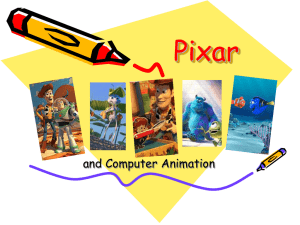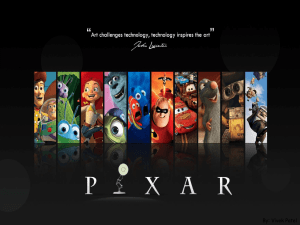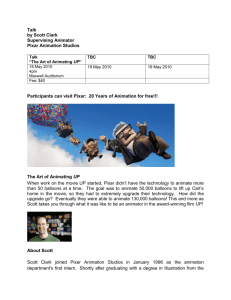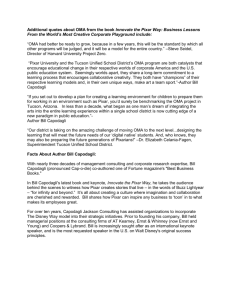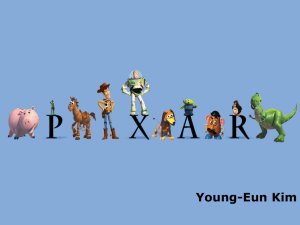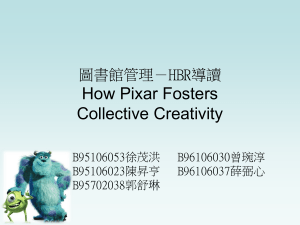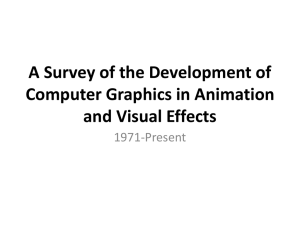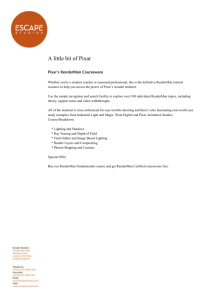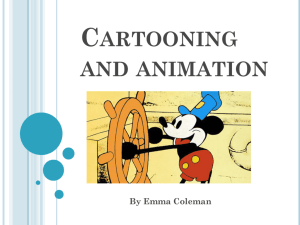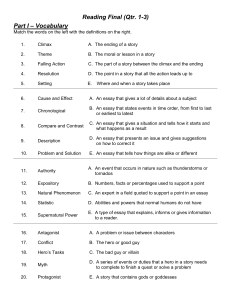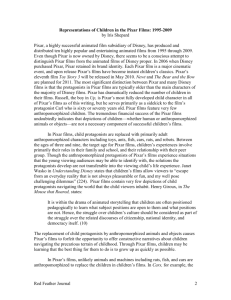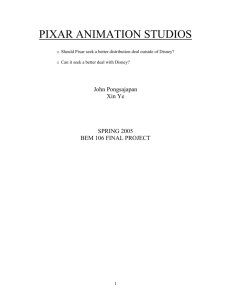Case study: How to avoid complacency
advertisement
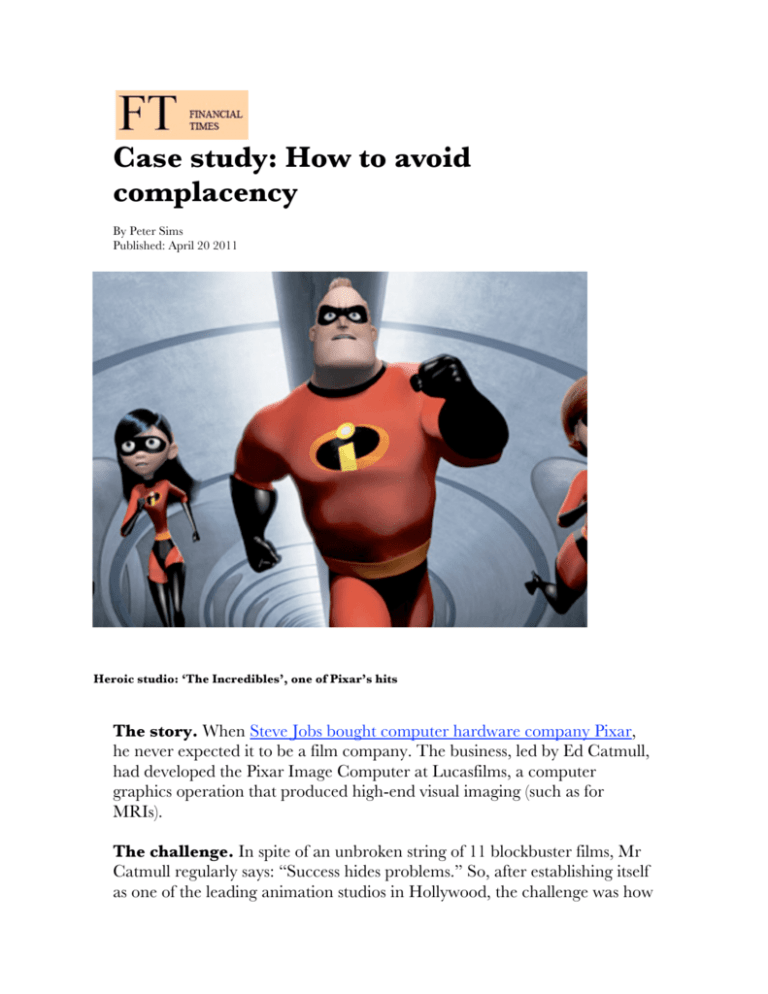
Case study: How to avoid complacency By Peter Sims Published: April 20 2011 Heroic studio: ‘The Incredibles’, one of Pixar’s hits The story. When Steve Jobs bought computer hardware company Pixar, he never expected it to be a film company. The business, led by Ed Catmull, had developed the Pixar Image Computer at Lucasfilms, a computer graphics operation that produced high-end visual imaging (such as for MRIs). The challenge. In spite of an unbroken string of 11 blockbuster films, Mr Catmull regularly says: “Success hides problems.” So, after establishing itself as one of the leading animation studios in Hollywood, the challenge was how to battle complacency. How do you create a culture that regularly identifies and solves new problems to avoid succumbing to inertia? The strategy. Although Pixar’s hardware never found a market, Mr Jobs shrewdly allowed a small animation division, led by John Lasseter, a former Disney animator, to make small bets on short animated films and, later, television advertisements. The animation team was able to hone its craft at a relatively low cost. Pixar’s success with short films was a vehicle for the company to develop its digital animation expertise, reputation, a brand and core technology, as well as the credibility necessary to ultimately co-produce (with Disney) Toy Story in 1995, the first full-length digitally animated film. Engage employees across the organisation. Mr Catmull and other executives seek feedback from all staff, regardless of their position – including janitors – about company operations as well as its work-in-progress films. “If they disagree with me or with John Lasseter or with the directors, the directors don’t take that personally,” Mr Catmull said in an interview with Harvard Business Review. Hierarchy and status are of less relevance. For instance, when animators are working on a film, they submit their draft work at the end of each day to a central computer system (regardless of how complete or incomplete), where colleagues and the film’s director can review it. Animation team members gather in a conference room each morning with the supervising animator and the film’s director for “dailies”, quotidian reviews of animation works-in-progress. Certain shots are then projected on to a screen and everyone is encouraged to share their opinions, ideas and solutions. The director eventually makes the final decisions but not before everyone – including the newest animators to join the company – is allowed to suggest constructive ways the work can be improved. Everyone feels engaged and that they have a voice through this process. Sharing daily works-in-progress raises the bar for all participants, reduces inhibitions, enhances group creativity and avoids wasted effort. Did it work? Outsiders are routinely surprised by Pixar’s cultural willingness to be challenged. When Stanford professors Robert Sutton and Hayagreeva Rao and McKinsey Quarterly’s Allen Webb interviewed Pixar director Brad Bird about being recruited to the company, he recounted: “Steve Jobs, Ed Catmull, and John Lasseter said, in effect: ‘The only thing we’re afraid of is complacency, feeling like we have it all figured out. We want you to come shake things up. We will give you a good argument if we think what you’re doing doesn’t make sense but, if you can convince us, we’ll do things a different way.’ “For a company that has had nothing but success to invite a guy who had just come off a failure and say ‘go ahead, mess with our heads, shake it up’ – when do you run into that?” Key lessons. Pixar has worked to create a non-hierarchical atmosphere, where the barriers to providing feedback and suggestions are low, regardless of position. The company’s leaders also routinely encourage non-conforming views and constructive ways to create improvements and counteract complacency. The writer is the author of ‘Little Bets: How Breakthrough Ideas Emerge from Small Discoveries’ Copyright The Financial Times Limited 2011.
